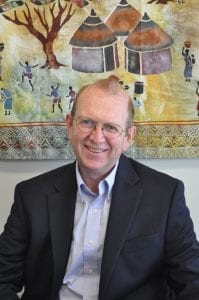
The Rev. John Edgar
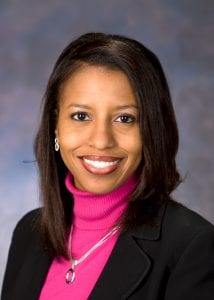
Angela Mingo
Hospitals across the country have been taking steps to work with community-based organizations to address a major cause of poor health in neighborhoods: substandard housing. Shelterforce recently chatted with Angela Mingo, community relations director of Nationwide Children’s Hospital in Columbus, Ohio, and the Rev. John Edgar, the executive director of the faith-based CDC called Community Development for All People, to learn more about their partnership, how it came to be, and to find out how others can form similar partnerships to help residents in their respective communities.
Lillian Ortiz: How did Nationwide Children’s Hospital and Community Development for All People connect? What was the relationship-building process like?
Angela Mingo: That started by way of a conversation with Nationwide Children’s Hospital and the city that centered on affordable housing on the South Side of Columbus. The city was engaged in a program called Home Again, which started in a different area near the West Side of Columbus known as Franklinton, where the city was investing in vacant, blighted housing structures to spur homeownership. [City officials were] looking to identify another neighborhood of opportunity. They introduced us to Community Development for All People, the CDC here on the South Side that was already engaged in affordable housing.
The relationship building started in the space of affordable housing and housing redevelopment, eliminating the blight on the South Side of Columbus, and trying to bring homeownership opportunities in a neighborhood that had seen its share of foreclosures, but wasn’t at a total state of despair. We still had homeownership at some level, between 20 and 25 percent in the neighborhood, so we felt like that was a good starting point. As we were exploring the space of affordable housing and its impact in improving the neighborhood, we started to build a relationship that has continued to grow.
Rev. John Edgar: Community Development for All People (CD4AP) is a faith-based community development corporation. We began in 1999 as a “free store” where we provide clothing and household items at no charge to large numbers of very low-income folks. [In 2005], we did our first venture in housing. Somebody turned over a vacant duplex [and] provided money for us to hire some people from the neighborhood. When the duplex was finished, we would use it as housing for people who [were] homeless or at immediate risk of being homeless.
Doing that one little venture brought us to the attention of the Enterprise Foundation [and] they offered to do some technical assistance with us. From there we became a community housing development organization (CHDO), which allowed us to receive modest grant funding from the City of Columbus to acquire a house that we rehabbed.
After getting that done, we ended up getting $1 million [in] grant money from the city and state. We bought 14 vacant, blighted houses, and began to gut rehab those. Three of those houses were located on one block on Carpenter Street, where if you stood on the front porch you could see the top of the then-old hospital building for Nationwide Children’s Hospital.
Right across the street, somewhat by coincidence, the city initiative that Angela referred to called Home Again had just completed two houses. So, between the two, there were these five houses that had all been in terrible shape, vacant and blighted, that had been brought back to life.
At the time the hospital approached us, that almost microscopic amount of redevelopment was visible in an attractive way. What we experienced from the hospital, at that point, was the invitation to talk about a joint collaboration. As we listened to Angela and Tim Robinson, CFO of the hospital, it became clear that there seemed to be aligned interest in an outcome that was intertwined with the self-interest of the hospital. The hospital was in the process of doing hundreds of millions of dollars worth of vertical construction, wanted some significant investments from the city and the state, and the city was pushing the hospital to [be] a good neighbor in the community, especially around housing.
There had been some tensions over a rental portfolio that the hospital had acquired a number of years [ago]. In the end, the hospital went vertical and to the west, and they had this group of 70-some rental properties to the immediate east. The way we perceived it, the city was asking them not only to fix up their own property, but what would they do with housing in the community?
So we got involved in this joint venture because they invited us to collaborate. We formed a new nonprofit called Healthy Neighborhoods, Healthy Families (HNHF) Realty Collaborative. It’s actually owned by CD4AP, but the hospital initially pledged somewhere between $3 million to $5 million over a three-plus year period to launch this initiative. The hospital agreed to hire somebody fulltime to coordinate housing work [who] would be directly accountable to Angela as an employee of the hospital and also accountable to me and to CD4AP because they would be working through the subsidiary corporation that we own. That’s where we began.
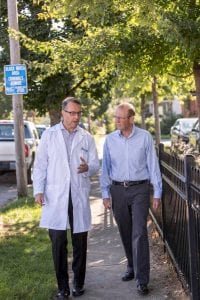
From left, Dr. Kelly Kelleher and the Rev. John Edgar. Photo courtesy of Nationwide Children’s Hospital
Ortiz: Can you walk us through the process behind forming the nonprofit collaborative and how the partnership works?
Mingo: The Rev. Edgar’s team provides the community housing development organization status. What we’ve structured is a subsidiary of the CDC that has employees who are leased to Community Development for All People by Nationwide Children’s Hospital. Their salaries and benefits come from the hospital. Four staff members oversee the housing work for Healthy Homes, [a project of HNHF Collaborative]. And we have a housing director position, several housing coordinator positions, and an admin to facilitate that work.
Edgar: There’s a board of directors where half of the members of the board are selected by Nationwide Children’s Hospital, and the other half are selected by Community Development for All People. While I don’t think it’s in the actual bylaws, it was agreed from the beginning that the CFO of the hospital, Tim Robinson, is the chair of the board, and then I serve as the president of the board. Angela is one of the directors, and there are a handful of other folks. That group controls the priorities and the strategic direction of the work. Because it’s a subsidiary of Community Development for All People money for this work is almost always given to CD4AP. We then pass it forward into the bank account for HNHF Realty Collaborative. It has its own bank accounts and separate bookkeeping.
The hospital agreed from the start that [it] would make an annual payment to CD4AP of $100,000 for part of my time, and to help our organization run more efficiently. We, in turn, decided that we would not seek developer fees for Community Development for All People on any of the housing work that we do through HNHF Realty Collaborative. We are simply are grateful to receive the stipend. That amount moved from $100,000 a year to $115,000 a year. For us, it looked like a good way to stabilize our organization and expand our mission.
Shortly after we got involved, a couple things happened that helped this partnership expand. One was the availability of Neighborhood Stabilization Program (NSP) funds. W became a fairly significant recipient of those dollars. Part of what made us so attractive was that the hospital was willing to commit itself to be the group that was responsible for acquisition, construction, and holding costs until properties were sold. The hospital simply had deeper pockets than any of the other nonprofits that were trying to develop housing.
Also, the hospital used its strong balance sheet in the early days to borrow $1 million from the Affordable Housing Trust. It functioned as kind of a revolving loan fund that made it even easier to manage cash flow challenges. We were able to be more nimble, working with small general contractors, because we could guarantee payment to them without worrying about receiving repayment from the city through NSP funds.
At about the same time, the United Way of Central Ohio decided, for the first time ever, to invest in housing. And they liked what they saw in the combined strength. They began to put about a quarter of a million dollars a year into the work of HNHF Realty Collaborative, though some of that money was also used for a separate LLC that CD4AP created to do housing work in another part of the South Side. We were able to have more impact than we had initially anticipated.
Ortiz: Were there any other community groups involved in other ways?
Mingo: We’ve carved out our housing investment within the boundaries of a civic association and an area commission—the Southern Orchard Civic Association and the Columbus South Side Area Commission. When we started the conversation with CD4AP and the City of Columbus, we made a public announcement about Healthy Homes and Healthy Neighborhoods, Healthy Families. And we made that announcement in partnership with the civic groups because we wanted to make sure they were part of the announcement, that they were supportive of the endeavor, and that we were all on the same page. In terms of partners and engagers in the conversation, they’ve been at the table from the very beginning.
Oftentimes our interaction with the area commission and the civic association centers around structural changes [to] properties we’re renovating. So if we need a zoning variance, or we’re doing something unique to the property that requires city engagement that then prompts a community engagement process. Periodically we will go to the civic group and the area commission to share architectural designs, or property listings of all the properties we’re improving.
Oftentimes when we have city or public dollars going into our homes, we really need to be visible and in front of those groups to make sure we have their support and they know exactly what we’re doing. That has helped us in terms of communication with the neighborhood.
Miriam Axel-Lute: What were the main drivers for choosing the organizational format you did? Were there other considerations about having an entity that was equally controlled by both organizations?
Edgar: It gave us confidence that we would be able to have a say in what was happening because what we were really concerned about was whether the hospital would stay in, and whether—despite assurances to the contrary—it would have been happy to gentrify the whole neighborhood. We are strongly committed to creating a sustainable, mixed-income neighborhood. So for us, looking for that kind of mutuality mattered. It became clear to us fairly quickly that the hospital’s primary direction was very similar to our own.
Mingo: The conversation went in the direction that it did organically. We really didn’t look at other options. There was a mutual consensus [and] we felt like this was the right structure. The hospital has been able to financially be an anchor to Healthy Homes, while CD4AP owns its assets. The balance felt right.
For Nationwide, we benefit from the community trust that has been built by CD4AP. There’s a great benefit to have a community partner that was familiar with the neighborhood and its residents, and residents were familiar with them. So it was of grand benefit to us to be able to form a partnership in this way.
Ortiz: Were there any false starts or moments of frustration?
Mingo: We’ve been very fortunate. Not only do our organizations work well, primarily because the missions align, but we’ve had financial support from partners who include the City of Columbus [and the] United Way of Central Ohio. We planned to be the sole investor in reducing and eliminating vacant, blighted properties on the near South Side, not knowing that Neighborhood Stabilization dollars would come into play. And then [with] United Way [support], it became a ripple effect. Their bold goals aligned with what we were doing in our work in the neighborhood.
Accountability to our financial partners [is important]. Performance really matters because this partnership is unique. It has a number of different partners. It now has a number of new layers that are a part of it. We’re seeing more players come into the fold, and increased financial resources that have played a part in the success of this program. And with that, we want to show results to our financial partners.
Timing of results is something that we take seriously so that we are keeping the momentum going [and] keeping outcomes strong. Sometimes we have to manage the timing of when resources come into play. And sometimes it works well, regardless of timing, because we have been able to be at the forefront of making sure that payouts and expenses are handled in a timely manner so that we’re keeping our contractors in a position where they can take care of their subcontractors and make payments in a timely manner. But there are times that timing of funding can have implications on timing of our outcomes of projects. And so that has been the one area that we have all been patiently getting through, making sure we’re staying engaged with our partners so that they know what’s going on, especially our financial partners.
Edgar: It is amazing how little friction there has been. We’ve been very fortunate that the things we’ve started have blossomed.
We had to get comfortable with each other, just like any other relationship. In a sense it started out very well. If not love at first sight, we became fast friends. [Nationwide] was sensitive to the fact that the hospital is, compared to CD4AP, a gigantic nonprofit, and we’re this little nonprofit, particularly when we first started. That was helpful.
I had to learn that the hospital, in many ways, is a very risk-averse organization. It’s a large endeavor, and it’s very concerned about its reputation. And so as we got involved together and started talking about what we would do next, I learned that it was important for me to be able to try to get myself in the position of the CFO or even the CEO, Steve Allen, who’s been incredible supportive. And part of it was helping them to have confidence that we would never intentionally, or even unintentionally, get the hospital in a place where they were going to inherit negative publicity because we screwed something up.
In this relationship, CD4AP is smaller, and so it’s also more nimble. We’re just wired to be willing to take some risk. Things like launching the South Side Renaissance initiative gave us the chance to be creative, even playful. Instead of doing gut rehab, we decided to try to do something with more modest improvements on existing properties that could create a long-term rental portfolio where we can rent at $100 or so a month less than anybody else in the nonprofit sector. Could we do this in a way that might lead to a self-imposed rent control to help these neighborhoods remain more mixed-income, while at the same time property values are appreciating because [we’re] getting rid of the blight and other factors?
We’ve done somewhere between $18 million and $20 million worth of housing, which is six times the original $3 million commitment. So it’s amazing in and of itself. But that then also gave the credibility to do the work with South Side Renaissance and also led the City of Columbus to approach Community Development for All People to become the nonprofit partner in what now are three successful Low Income Housing Tax Credit (LIHTC) deals. We approached Angela and Tim, and [said], “What if we did something that, at least in our part of the world, nobody has actually tried to do before?” [It was an] LIHTC deal [that was] organized so that it also built in the ability to create entry-level jobs for the long haul.
In this most recent venture, the NRP group and Community Development for All People owned what’s called The Residences at Career Gateway. But from the beginning, it was organized around the idea that there would be 2,500 square feet of job training space, and Nationwide Children’s Hospital would be the lead trainer, draw people from the neighborhood, and train them for entry-level positions at Nationwide Children’s Hospital, which is by far the largest employer on the South Side. The housing finance agency loved the idea of putting workforce together with housing development. The job training parts get underway in September.
Part of the reason we could do it is the trust that we had, but we were also limiting risk for the hospital and trying to maximize opportunity. If the deal really does go bad, the hospital has no ownership interest in it and they can say, “Nice idea, sorry it didn’t work.” But the hospital did make a grant of $300,000 on the development side of the $12 million project, which won points with the Ohio Housing Finance Agency because LIHTC tax credits are incredibly competitive across the country, and certainly in Ohio. It sweetened the deal. But what sold the deal was the agreement of the hospital to actually train people from the neighborhood on-site of the LIHTC development for existing jobs at the hospital. It made all the difference in being able to get it done.
Axel-Lute: Do you figure that the training will reach people because it’s located where they’re living, rather than at the hospital itself?
Mingo: Absolutely. This allows us to integrate right into the community, to meet people where they live. Being in the neighborhood really gives us a great advantage to have a pipeline for bringing in employees from the area to work at Nationwide.
Edgar: Right. We believe that the other thing that will help is that this dedicated space will not be used exclusively by Nationwide Children’s Hospital, but there will also be work readiness and remedial education programs that take place there as well. It’s intended to be a one-stop shop for people [who] want to get into the workforce, whether they’re immediately ready to be hired to do work at the hospital or not.
We can at least draw people in, do some preparatory work with some people who, maybe a year from now, could be candidates for the hospital, and, in other cases, people who can get immediate training, some sort of certification, and then be hired within a few months at the hospital. It’s also designed to have the capacity [for] job coaching and some support groups.
Axel-Lute: A Crosswalks piece mentioned that, in the ‘90s, there had been some tensions between the neighborhood and the hospital over eminent domain and parking lots, which is common for large institutions everywhere. You spoke about developing trust between the organizations, but were there also steps needed to rebuild trust with the broader neighborhood?
Mingo: I joined the hospital staff back in 2007 and [at the time], the hospital was engaged in an expansion project that did garner the attention of the neighborhood because demolition [was planned]. We had a building that was in the pathway of that expansion that had to come down, and it really triggered an outcry in the community in terms of how the hospital informed the general public, fiscal responsibility, and some other issues. On the hospital side, there have been a lot of learning pieces in our history with the community, so we’ve been very intentional in how we now communicate.
In 2001, before my coming on board with the hospital, we adopted what’s now known as a community, or good neighbor, agreement, which was an agreement that was formed with 14 neighborhood civic groups that are contiguous to our campus in the surrounding area, and they also all fall within the three zip codes that are contiguous to the hospital campus. That agreement is a commitment from Nationwide Children’s Hospital to create an open door of communication with our neighbors.
We’ve since developed a larger community relations team, in part because of the growth that has occurred through housing. But we’ve also added additional staff in community relations and that’s given us greater opportunity to engage [with] the community. We [have] quarterly meetings with all of the neighborhood groups in the surrounding area, [and] we also have a Neighborhood Advisory Committee, which is a smaller group that’s been formed in the event we have sensitive information that we need to communicate with the community, [like] demolition, hospital expansion, things of that nature.
We seek their feedback on [a] timeline for communication, effectiveness for our communication, and then we share it with the broader community. That has served us well. We have developed an internal team within community relations, and with the Healthy Homes program, of individuals who [are] not only committed to the functions and responsibilities of their work, but [have also] integrated this desire to be civic and outward looking to the community. It’s made a big difference in our effectiveness, in terms of sharing information, the timelines of sharing information, and even in creating a culture within the hospital that internal timelines are just as important as external timelines, and communication style is just as important, as well. We’ve been able to really shift the way we communicate with our neighbors, and I think that’s taken us a long way.
Edgar: I agree. Another thing I’m not sure any of us really appreciated when we first started, is that the decision to offer grant dollars to existing homeowners to make improvements on their homes had a significant impact on the level of goodwill that we were able to generate. It made more sense for folks to begin to trust the hospital when they saw an immediate, positive impact for their next door neighbor, or even for themselves. And the same was true when we began to do a similar kind of initiative in the South Side Renaissance neighborhood.
At the ribbon cutting [ceremony] for one of our early houses, with the CFO of the hospital, Tim, I shared that we had gotten drawn into this idea of creating a charitable pharmacy for people who would go to the hospital and get prescriptions, but didn’t have money to get them filled. It was not a primary issue for Children’s Hospital, because they were already filling scripts. But for adults, it was a real issue in the community. Do you pay the heat bill, or do you take your blood pressure medicine? Angela and Tim agreed to do a couple of things. Angela turned over the board meeting room one day so we could bring representatives from all the hospital systems and a variety of nonprofits and county commissioners together, to say, “Would this be of benefit to the community?” People agreed that it would be great to do something. The credibility of being on the hospital’s turf helped.
Nationwide Children’s Hospital made the first financial commitment. They pledged $25,000 in the first year to help launch this pharmacy; that became the leverage to convince the other three hospital systems in the city to also pledge money, [which] then led the Columbus Foundation and other entities [to do the same]. And so this organization has been up and running now for, at this point, I guess six or seven years, and distributes, this last year, about $5 million worth of free prescription medication to people who have scripts but can’t afford to get them filled. And so it was one more of these times where, by getting to know each other better, we were able to move to the next level.
Axel-Lute: Do you have recommendations for other pairs of organizations? Are there specific things that Nationwide did, or might not have done, that other hospitals should keep in mind in a similar situation?
EDGAR: [The hospital] did two things early on that were absolutely crucial for us to be able to have made this journey. One was not trying to throw their weight around too much. I don’t remember a single time we moved to a decision that people hadn’t come to common agreement.
The willingness to use that style [of] approach mattered. And then the other thing [was] realizing that if they would give us enough money in a way that’s an ongoing commitment, particularly in those early days, that I could free up my time to work on this, and not be chasing dollars to run other things in our organization. That proved catalytic in terms of what we could commit to the initiative. And at this point, the hospital gives grant dollars to CD4AP for various projects that add up to about $300,000 a year.
Mingo: Initially when you’re having those conversations, I always recommend that you keep them broad, because you’re trying to understand where’s the nexus between the organizations, and where is the value-added that can result in a partnership.
We were able to see early on that there was just an infinite amount of value in partnering with Community Development for All People. And so when we realized that housing didn’t need to be the end-all, be-all with this partnership, it just created a whole portal of other opportunity to reflect and focus on the other four prongs of Healthy Neighborhoods, Healthy Families. So we are partnering in so many different ways as it relates to safety, workforce development, education, and health and wellness, that have all complemented the work of the housing prong, and Community Development for All People [has] been a part of that conversation when we started this work. What we said early on was that we’re content not to be the driver of all five prongs of Healthy Neighborhoods, Healthy Families. We wanted this initiative to be catalytic, and we’ve been able to see that through the work of housing.
But we also realized that because we were content not being the driver of all five areas, we knew there may be others out in the community that could really be the leaders in some of these areas, and CD4AP has really stepped up as that leader in many of our prongs. And so as Rev. Edgar talks about the grant dollars that the hospital has been able to support or provide to the CDC, those dollars are reflective of the confidence that we have in their work.
You have a very large nonprofit in Nationwide Children’s Hospital partnering with a smaller nonprofit, but in terms of the scale of the employee base, it’s somewhat irrelevant because it really is about who can create the most impact, and who can be most effective in getting results.
Thank you.
[Correction: An earlier version of this article identified Healthy Homes as the name of the collaborative nonprofit organization. The only new entity is Healthy Neighborhoods, Healthy Families Realty Collaborative. Healthy Homes is a project and brand of HNHF.]

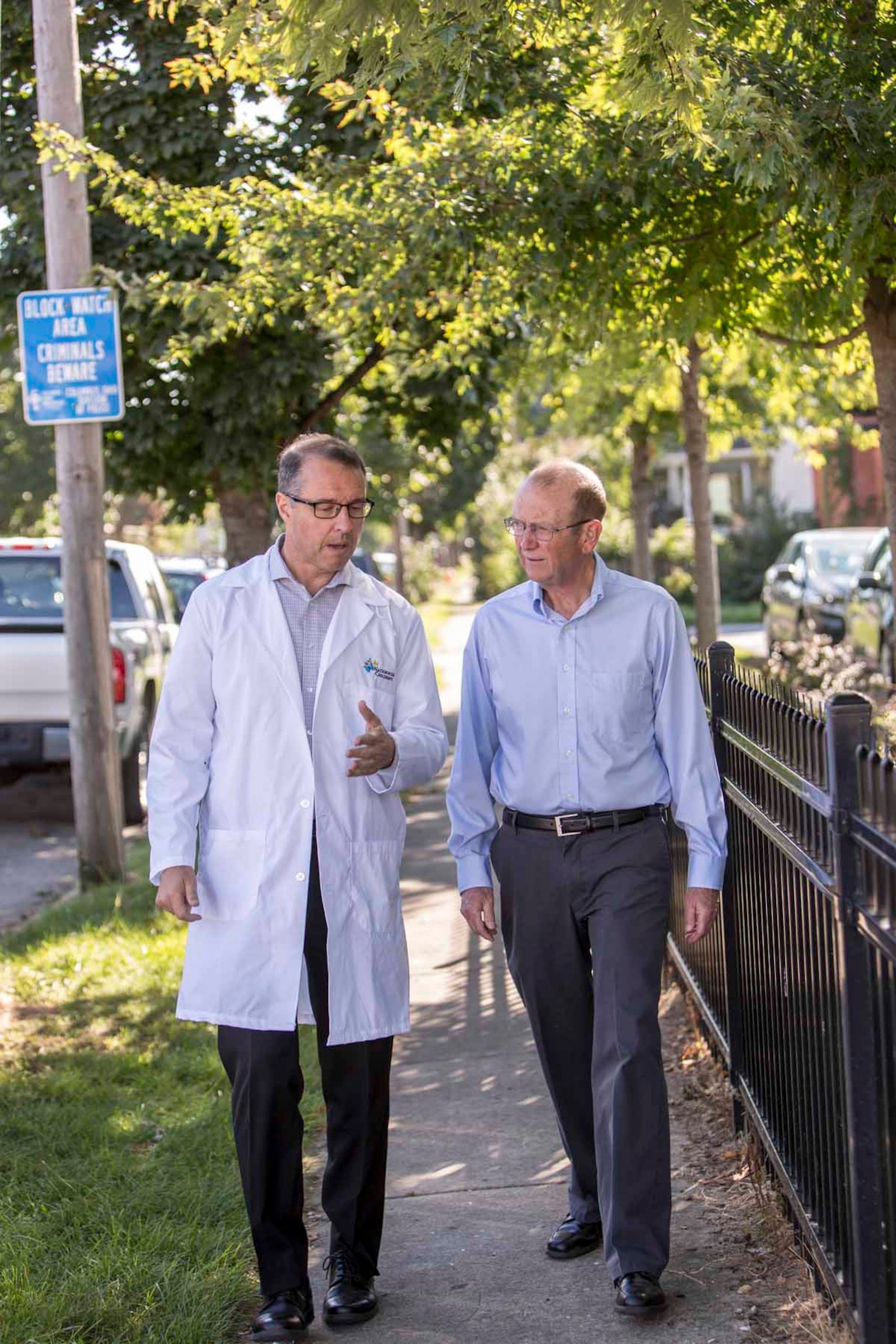

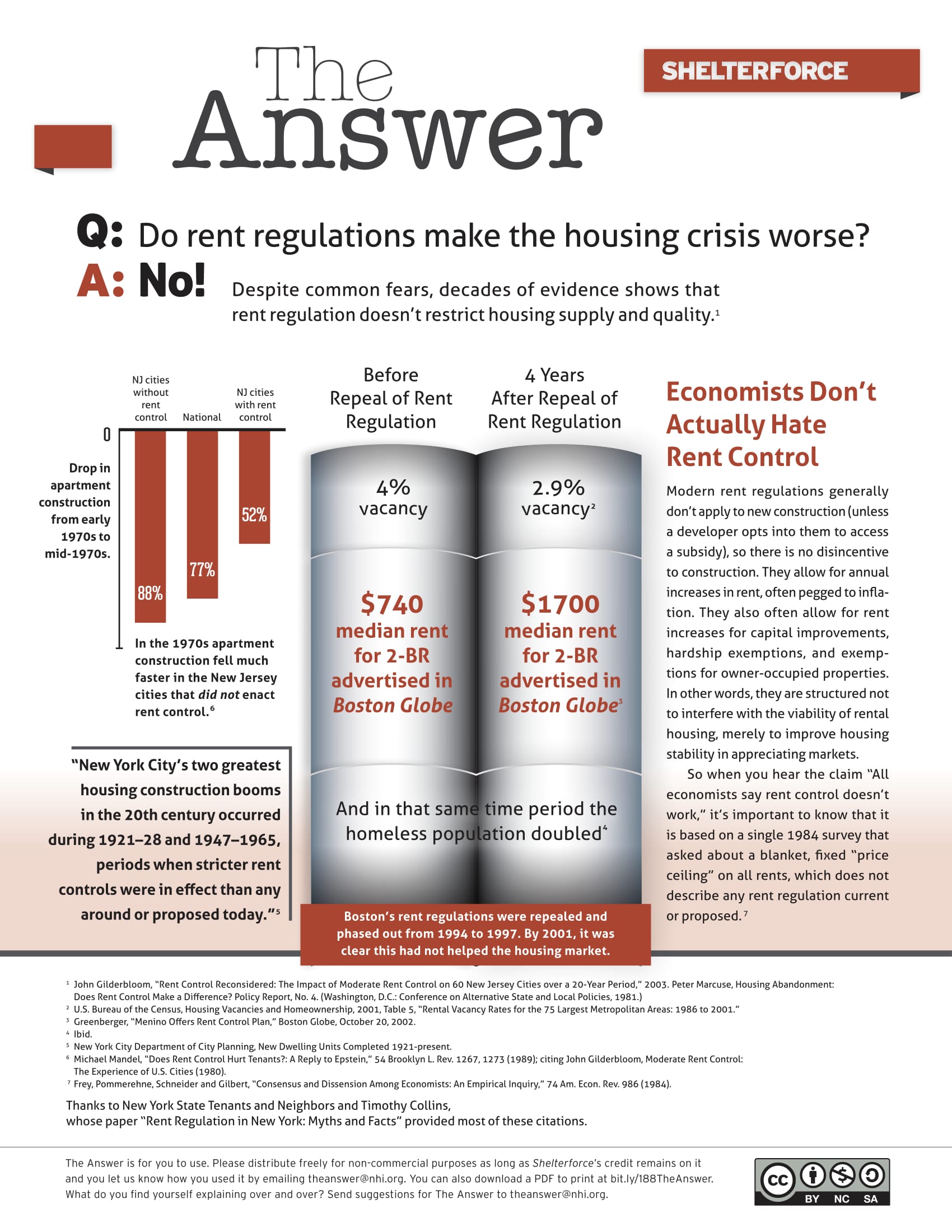

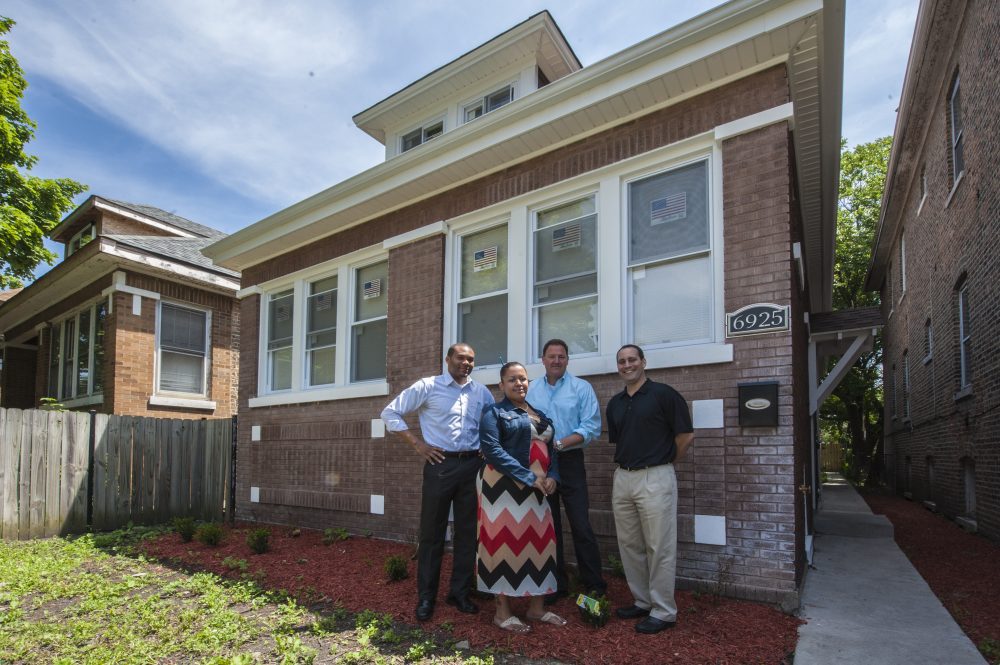
Comments